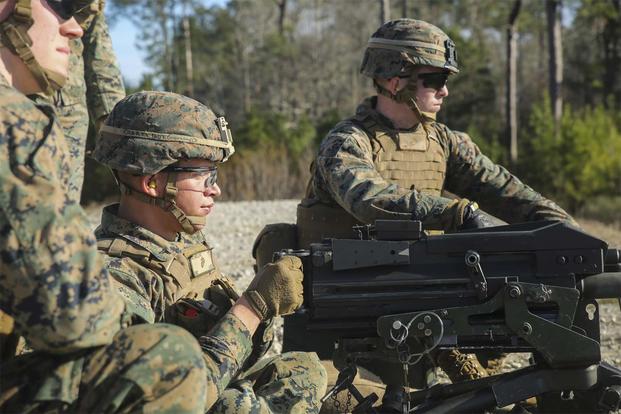A small 300-Marine task force bound for Helmand Province, Afghanistan, quietly deployed from Camp Lejeune, North Carolina, last week, officials with II Marine Expeditionary Force confirmed.
Known as Task Force Southwest, the element is led by Brig. Gen. Roger Turner and largely composed of troops from Lejeune's 6th Marine Regiment, who will train and advise local Afghan National Army and police forces as they struggle to hold the line against resurgent Taliban forces. The deployment was first reported by Marine Corps Times.
Helmand, Afghanistan's southernmost province, was the site of some of the most intense and costly battles of the long war. The headquarters of Marine Corps operations in Afghanistan, Camp Leatherneck, was located in Helmand, and Marines waged hard and lengthy offensives in populous regions including Sangin and Marjah in the latter years of the war, driving the Taliban out of district centers there.
Shortly before the Marine Corps pulled out of Helmand in October 2014 to mark the end of formal combat operations, it marked a formal withdrawal from Sangin, celebrating a district with newfound safety, stable governance, and protection by local forces.
News of Taliban gains in Helmand began to surface shortly after the Marines pulled out. In 2015, Marjah, site of Army Gen. Stanley McChrystal's famous 2010 "government-in-a-box" counterinsurgency offensive, fell to Taliban control.
But even since the Marine Corps announced the new deployment in January, the region has become more dangerous and uncertain.
In late March, multiple outlets reported that the Taliban had retaken control of Sangin, a district that cost the lives of some 50 Marines and 100 British troops in the primary offensive from 2010-11. A spokesman for U.S. Forces Afghanistan told The New York Times that the Afghan National Army had merely repositioned its district headquarters in the region, but other sources painted a grim picture of withdrawal and being overrun by the enemy.
In the wake of the Pentagon's decision to drop a 21,000-pound bomb on a network of caves used by Islamic State militants in Nangarhar province to the northeast, a Helmand spokesman reported that 11 civilians were killed and one wounded in separate roadside bomb blasts in Helmand's Nawa district and its capital, Lashkar Gah.
In January, Marine Corps Commandant Gen. Robert Neller told Military.com that he had "no delusions" about the challenges of the region to which the Marines were set to deploy.
"Are we going to change the game? I don't know; we'll find out," he said. "It's going to be a very challenging mission. Helmand and the Helmand River valley and that whole area is right smack-dab in the middle of [Taliban territory]."
The task force is set to replace a similarly sized Army unit, Task Force Forge, and will likely operate out of Camp Shorab, the Afghan Army's 215th Corps headquarters located at the former Camp Leatherneck, and Lashkar Gah, which also serves as the headquarters of the Afghan National Civil Order Police.
"We're going there to facilitate the capabilities of the Afghan 215th Corps and the Afghan police in Helmand and Lashkar Gah so they can be more effective and protect the security of the people who live there," Neller said in January.
-- Hope Hodge Seck can be reached at hope.seck@military.com. Follow her on Twitter at@HopeSeck.





























